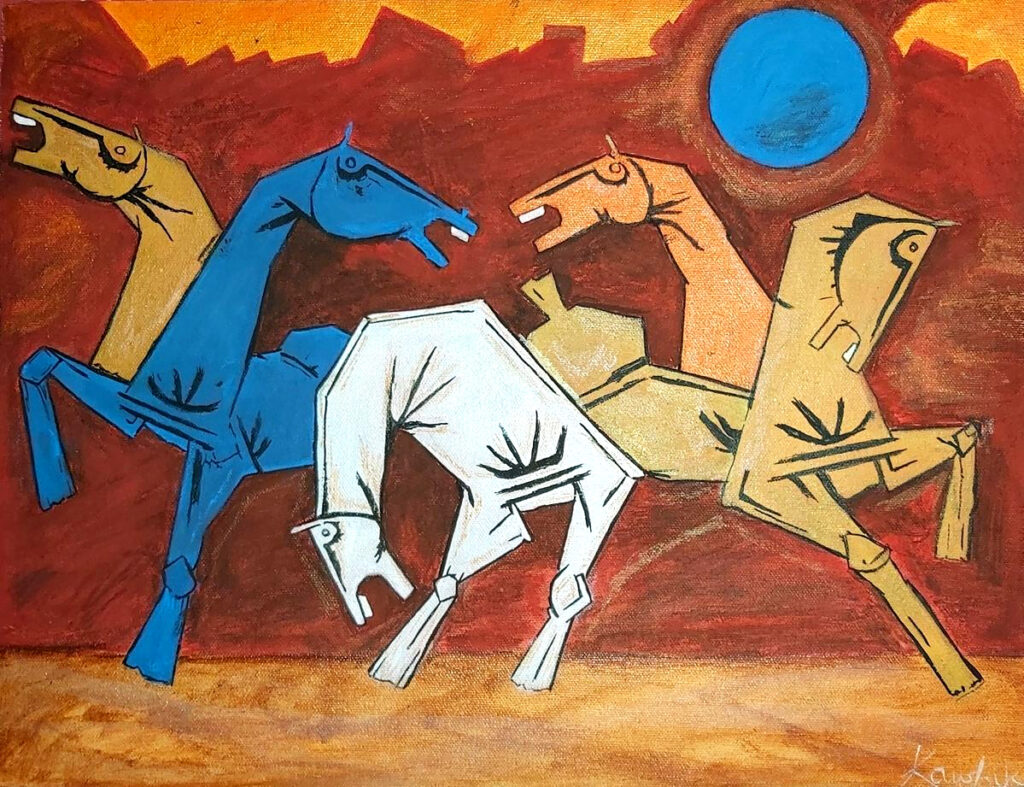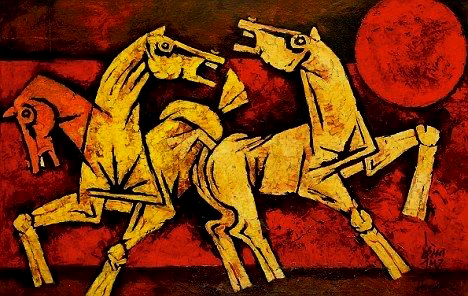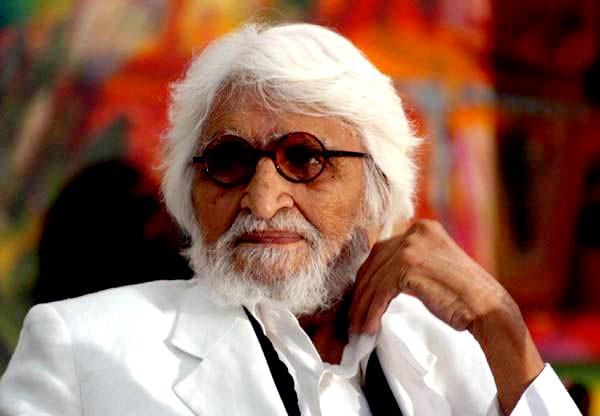M.F. Husain: The Picasso of India
Maqbool Fida Husain, popularly known as M.F. Husain, was born in 1915 and is one of India’s most renowned contemporary artists. Often referred to as the “Picasso of India,” Husain’s work is known for its vibrant colors, bold lines, and dynamic compositions, blending traditional Indian themes with modernist techniques. Some of his most famous works include “Mother India,” “Horse Series,” and “The Last Supper,” each reflecting his deep engagement with Indian culture, mythology, and social issues.


Husain’s rise to fame began in the 1940s when he joined the Bombay Progressive Artists’ Group, which sought to break away from colonial influences and develop a unique modern Indian art style. His distinctive approach quickly gained attention, and by the 1950s, he was exhibiting internationally. Despite his acclaim, Husain often courted controversy due to his provocative and unorthodox depictions of religious and cultural subjects, leading to both legal challenges and attacks on his works.
Throughout his career, Husain received numerous accolades, including the Padma Shri, Padma Bhushan, and Padma Vibhushan, some of India’s highest civilian honors. His legacy as a pioneering modernist who boldly addressed social and political issues continues to inspire and influence artists worldwide.
Tyeb Mehta: A Luminary of Indian Modern Art
Tyeb Mehta, born in 1925, is celebrated as a pioneering figure in Indian modern art. Known for his minimalist and expressionistic style, Mehta’s work often explores themes of suffering, struggle, and the human condition. His most famous paintings include “Mahishasura,” depicting the mythological battle between the demon Mahishasura and the goddess Durga, and “Kali,” which presents a powerful image of the fearsome Hindu goddess. Mehta’s work is characterized by its bold use of color, sharp lines, and a deep sense of movement and emotion.


Mehta’s journey to prominence began in the 1950s when he joined the Bombay Progressive Artists’ Group, an influential collective that sought to create a new visual language for Indian art post-independence. He further honed his skills during his time in London and Paris, where he was influenced by European modernism, particularly the works of Francis Bacon and Henri Matisse. However, it was his unique interpretation of Indian themes through a modernist lens that truly set him apart.
In the 1990s, Mehta’s work gained significant recognition, with his painting “Celebration” fetching a record price of 15 million at auction, marking the highest price ever paid for a contemporary Indian painting at the time. This landmark sale underscored his importance in the global art market and cemented his status as a key figure in contemporary Indian art. Mehta’s contributions were recognized with prestigious awards, including the Padma Bhushan, one of India’s highest civilian honors. His legacy endures through his powerful and evocative artworks, which continue to resonate with audiences worldwide.





